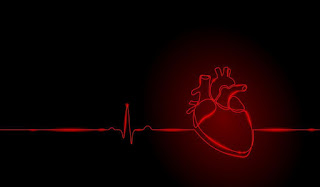atherosclerosis
ATHEROSCLEROSIS
what is atherosclerosis?
- a pattern of vascular disease which is characterized by intimal lesions called atheromas /atheromatous / atherosclerotic plaques that protrude into and obstruct the vascular lumen and weaken the underlying tunica media.
what are the common sites of formation of atheromas?
- proximal portion of coronary arteries
- internal carotid arteries
- the circle of willis
- large vessels of the lower extremities
- renal arteries
- mesenteric arteries
morphology of atheromatous plaques
A) MACROSCOPIC :
- color : white yellow ,if superimposed thrombus over ulcerated plaque then it is red - brown
- size : vary in size
- shape : patchy and eccentric
- cut section : a) central necrotic core b)subendothelial superficial fibromuscular cap
- periphery of the lesions : NEOVASCULARIZATION
B)MICROSCOPIC : three principal component
- cells : smooth muscle cell,macrophage and t cell
- extracellular matrix : collagen,elastic fibers and proteoglycans
- intracellular and extracellular lipid : mostly cholesterol and cholesterol esters
what are the risk factors for atherosclerosis
?
major risk factors :
modifiable :
1. Age
2. gender
3. genetics
4. family history
non modifiable :
1.hypertension
2.hypercholesterolemia
3.cigarette smoking
4.alcohol
5.diabetes
addictional risk factors :
1. inflammation and CRP ( C - reactive protein)
2. hyperuricemia
3. hyperhomocystinemia
4. metabolic syndrome
5. lpoprotein A
6. factor affecting hemostasis ( e.g - thrombin and platelet derived factors)
7. other factors
- obesity
- lack of excercise and physical inactivity
- high carbohydrate intake
- 'type A personality' with stress factors in lifestyle
how atheromas are formed?
atherosclerosis progress in the following sequence -
1. endothelial injury and dysfunction
2. accumulation of lipo protein
3. monocyte adhesion to the endothelium
4. platelet adhesion
5. factor release from activated platelets, macrophage and vascular wall cell
6. smooth muscle cell proliferation,extracellular matrix production and recruitment of T - cell
7. lipid accumulation both extracellularly and within cells ( macrophage and smooth muscle Cell)
what are the complications of atherosclerosis?
1. rupture ,ulceration or erosion of the surface of atheromatous plaques
2. ishchemia
3. hemorrhage
4. atheroembolism
5. aneurysm formation
6. calcification
7. infarction :
- heart : myocardial infraction
- brain : cerebral infraction
- aorta : aortic aneurysms
- peripheral vessels : peripheral vascular disease (gangrene of the legs)
8. complications due to atherosclerotic stenosis
- mesenteric occlusion and bowel ischemia
- sudden cardiac death
- chronic ischemic heart disease
- ischemic encephalopathy
- intermittent claudication (diminished perfusion of the extremities)
how to prevent atherosclerosis?
1.primary prevention :
- cessation of cigarette smoking
- control of hypertension
- weight reduction
- increase exercise
- moderation of alcohol consumption
- lowering total and LDL blood cholesterol levels while increasing HDL
2.secondary prevention : prevent recurrence of events such as MI in patient with symptomatic disease














Comments
Post a Comment